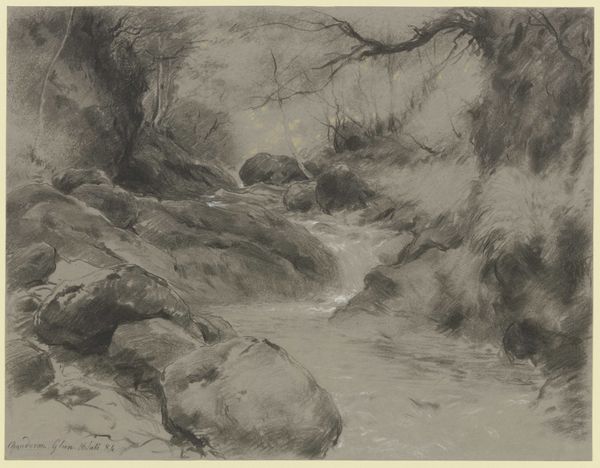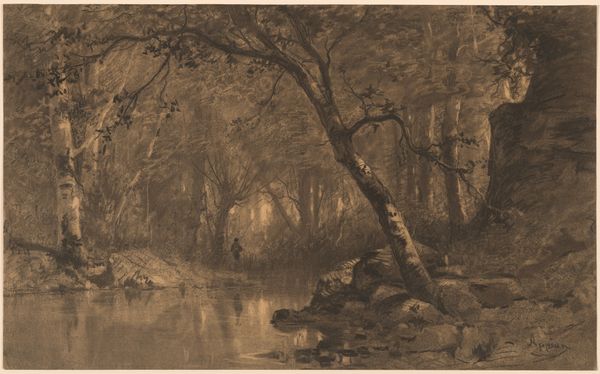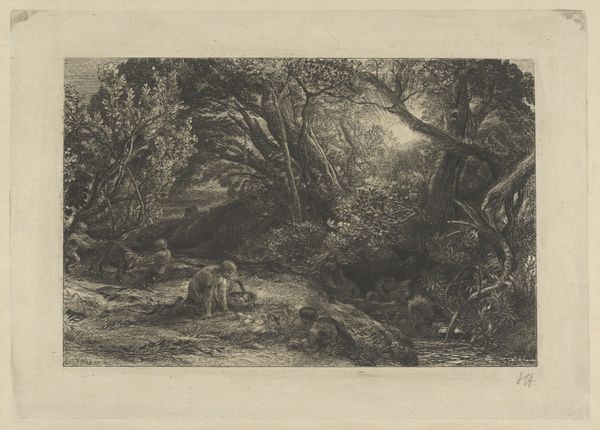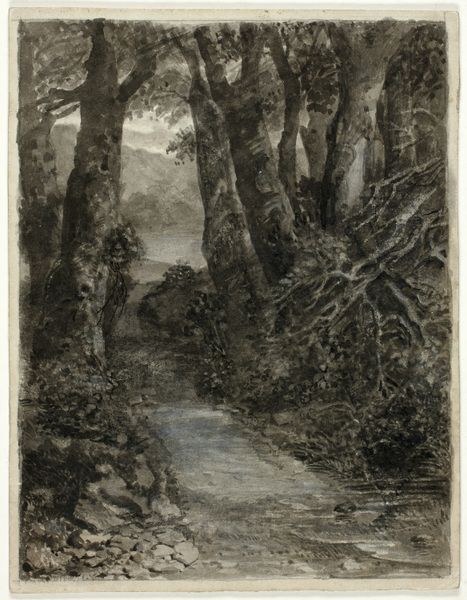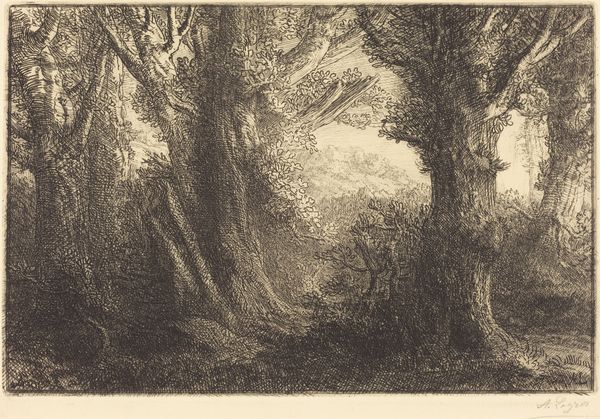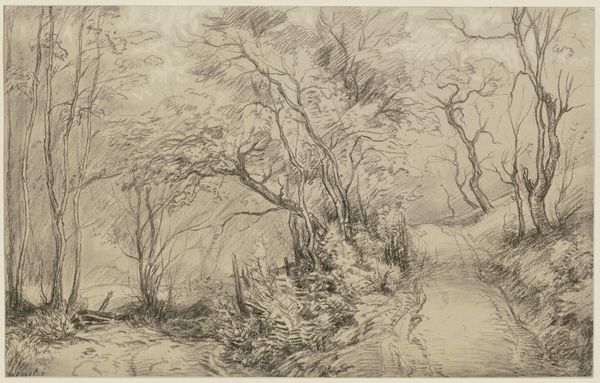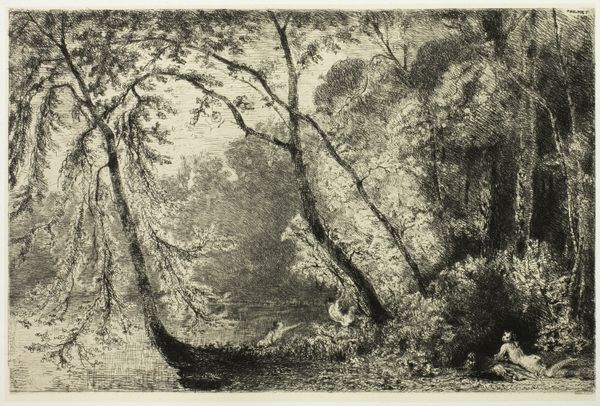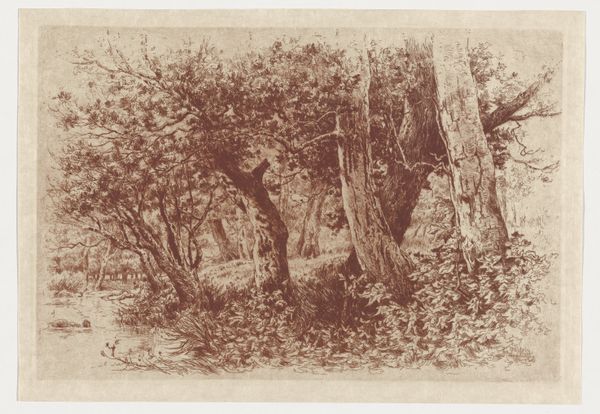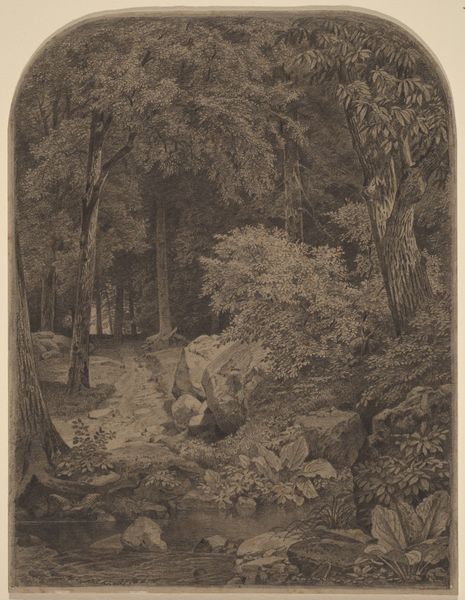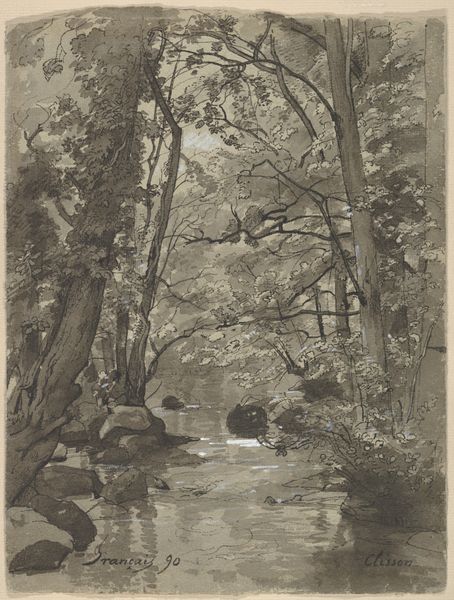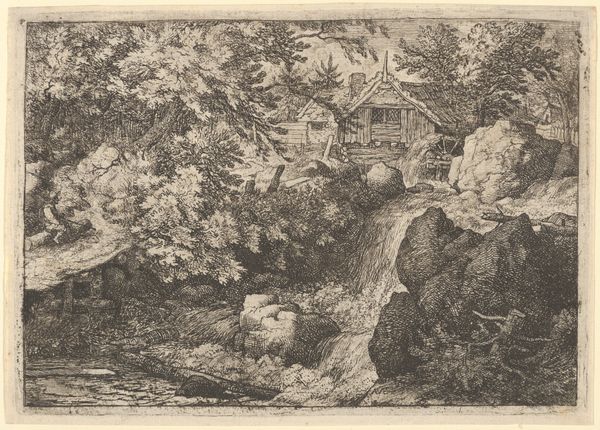
Copyright: National Gallery of Art: CC0 1.0
Editor: This is Rodolphe Bresdin's "The Brook in the Woods," an etching from 1880. It's such a detailed, almost claustrophobic scene. There's a sense of the sublime but also something slightly unsettling about how overgrown and enclosed the landscape is. What strikes you most when you look at this piece? Curator: The density definitely resonates. Bresdin created this incredibly intricate world. But let's think about what "nature" meant in the late 19th century, particularly in relation to expanding industrialization and urbanization. Wilderness, like that shown in “The Brook in the Woods”, was both romanticized and threatened. How do you think anxieties about encroachment onto nature informed Bresdin's depiction? Editor: That's interesting. It’s easy to see this as a straightforward romantic landscape, but the darkness and dense undergrowth do hint at a sense of nature pushing back, almost resisting human presence. Curator: Exactly. The “natural” isn’t just a backdrop; it's an active agent. Consider the historical context too. Bresdin, though admired by some, struggled financially and faced social alienation. Could this etching reflect a search for refuge in the natural world, but also an awareness of its vulnerability, much like his own? What kind of viewer would feel empathy for that? Editor: That adds a layer of complexity. Maybe the artist wasn't just depicting a scene, but also conveying a commentary on his own place in society and his anxieties about these shifting landscapes of both industrialization and societal precarity. Curator: And perhaps inviting the viewer to consider theirs as well. The seemingly objective landscape genre becomes a canvas for projecting and processing societal anxieties around power, dispossession, and who has access to “nature” and on what terms. Editor: I see that the close examination can really expand one's perception of a classic subject like this! Curator: Exactly, It is essential to explore both social implications and philosophical perspectives.
Comments
No comments
Be the first to comment and join the conversation on the ultimate creative platform.
